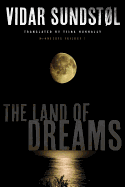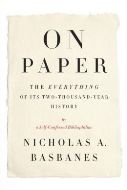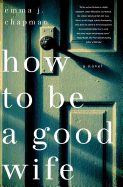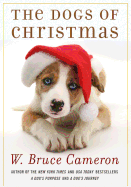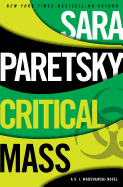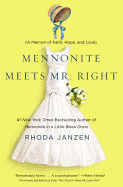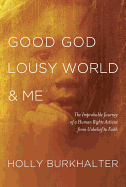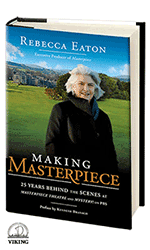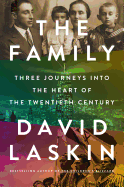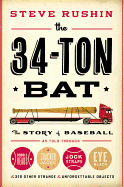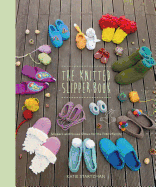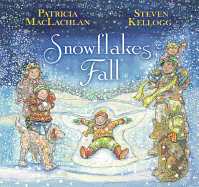Friday, November 1, 2013
The fact that books and music fit together like puzzle pieces is not headline-making news. Well, maybe it is. Willie Nelson just landed a book deal to tell the "unvarnished, complete and tremendous" story of his life. Morrissey's Autobiography is very popular in the U.K. and headed to the U.S. December 3. Linda Ronstadt's Simple Dreams: A Musical Memoir is a hit.
In recent years, Keith Richards and Patti Smith wrote bestselling memoirs, as did Janis Ian, whom I met earlier this year promoting her children's book, The Tiny Mouse, at a trade show in New York City. The Band's Robbie Robertson was also there, discussing Legends, Icons & Rebels: Music That Changed the World.
With all these music legends in print, other great reads with a beat could easily get lost in the (excuse my iPod reference) shuffle. And that would be a damn shame. Two of my recent favorites: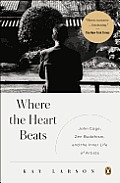 Kay Larson's Where the Heart Beats: John Cage, Zen Buddhism and the Inner Life of Artists (now in paperback) is an intriguing look at this extraordinary composer's life, but it is also about creativity, artistic exploration, spirituality, humor and much more. Of 4'33", Cage's legendary "silent piece," Larson writes: "The important thing about having done it, he said, 'is that it leads out of the world of art into the whole of life.' And so it does."
Kay Larson's Where the Heart Beats: John Cage, Zen Buddhism and the Inner Life of Artists (now in paperback) is an intriguing look at this extraordinary composer's life, but it is also about creativity, artistic exploration, spirituality, humor and much more. Of 4'33", Cage's legendary "silent piece," Larson writes: "The important thing about having done it, he said, 'is that it leads out of the world of art into the whole of life.' And so it does."
In The Boy at the Gate, singer-songwriter Danny Ellis recounts his tough Dublin childhood and years spent at the notorious Artane Industrial School orphanage for boys. He moves fluidly between present and past, exploring a hard early life and its aftereffects with a mischievous tone: "It's Brother Fallon. He's teaching us the Do-Re-Mi thing. It's mustard! He's showing us how to find the notes in the air.... The music, the notes have names and addresses, just hanging there. When you know where they live, you can go back to them any time you bloody well want." I don't read music, but I do read music books. And these two are mustard! --Robert Gray, contributing editor
How to Be a Good Wife
by Emma Chapman
How to Be a Good Wife, Emma Chapman's debut novel, is sure to appeal equally to thriller fans and readers who love Kate Chopin's The Awakening with its portrait of a housewife on the brink of sanity or madness, depending on whom you believe.
Middle-aged housewife Marta has few memories from before her marriage to Hector. She has spent her adult life focusing on her husband as instructed by her mother-in-law's wedding gift, a manual entitled How to Be a Good Wife ("Catering to his comfort will give you an immense sense of personal satisfaction"). On the surface, Marta is the picture of domesticity, loyal to Hector and devoted to their grown son, Kylan. However, as the reader learns more, Marta appears increasingly unstable, forgoing her prescription medication--allegedly in hopes of regaining more of her memory--in favor of blackouts and the hallucinations of a little girl who is sometimes clean and cheerful, sometimes filthy and violent. Is Hector a long-suffering husband who protects Marta, or a master manipulator hiding a secret so terrible it would shatter their family forever? Has the absence of pharmaceuticals cleared the fog obscuring a more sinister truth in their marriage?
Chapman keeps readers firmly planted in Marta's point of view, unable to distinguish truth from delusion. Readers will find themselves confronting their own biases about mental illness as they struggle along with Marta to make sense of her tense, troubled world in this subtle feminist thriller. --Jaclyn Fulwood, youth services manager at Latah County Library District and blogger at Infinite Reads
Discover: This understated thriller will keep readers guessing about the truth behind a mentally unstable woman's seemingly ordinary marriage.
The Dogs of Christmas
by W. Bruce Cameron
Puppies, romance and Christmas help make The Dogs of Christmas a heartwarming novel, but the book includes enough tension to balance its sweetness. As in his earlier "dog books," W. Bruce Cameron suggests readers will be smiling on the last page, but still keeps them guessing.
In A Dog's Purpose and its sequel, A Dog's Journey, canine narrator Buddy and his reincarnations tell the story of a good dog's role in the lives of his humans. The Dogs of Christmas opens with no dogs in the picture; instead, a lonely young man firmly rejects his neighbor's attempt to "dump a dog on him." Knowing Lucy will be abandoned along a Rocky Mountain road, Josh relents, realizing too late that she's pregnant--and her current caregiver is not likely to be seen again.
Sweet, undernourished Lucy thaws Josh's heart, and by the time she loses her litter, he's committed to her. Then a box of newborn pups shows up in Josh's truck, Lucy becomes a foster mom, Josh becomes Lucy's advocate, and that's when the beautiful and kind Kerri, of the Animal Shelter, enters their lives.
Puppy care and "foster failure"--the inability to relinquish pups to permanent adoption--are two of the lessons Cameron adroitly weaves through the tale of Josh and Kerri's romance. And while Lucy is the dog star of the book, the pups she nurtures are equally engaging. A Christmas Eve twist threatens a happy conclusion, but like Josh's "Away in a Dog Box" puppy carol lullaby, all ends harmoniously. --Cheryl Krocker McKeon, bookseller, Book Passage, San Francisco
Discover: A heartwarming story of puppies, Christmas and love to delight any reader.
Mystery & Thriller
The Land of Dreams
by Vidar Sundstøl, transl. by Tiina Nunnally
Vidar Sundstøl's The Land of Dreams is Scandinavian mystery at its finest--even though it's set in the U.S. Lance Hansen (whose four grandparents were all Norwegian) is a Forest Service Officer in northern Minnesota who spends his days scouring the edges of Lake Superior for litterers, people fishing illegally and meth labs. One day, he stumbles across a naked man, covered in blood, who keeps repeating the Norwegian word for love. Hansen follows the stunned man into the woods, where he finds a gruesomely mangled body. He calls in assistance; because the body is in a national forest, the FBI is soon on the scene.
The two men were Norwegian tourists on a canoeing vacation. Why would someone murder a tourist so brutally? Norwegian detective Eirik Nyland comes to Minnesota to help the FBI answer this question. Meanwhile, Hansen--an avid genealogist--turns to his historical archives to discover a possible link between this murder and the disappearance of an Ojibway man more than a century before.
Sundstøl aptly weaves together the history of the Ojibway people, the story of the Scandinavian immigrants who arrived in northern Minnesota a century earlier and the men currently investigating the crime. It also brings up difficult questions about guilt, allegiance, and familial and cultural bonds that are hard to break. The Land of Dreams, originally published in Norway in 2008 as the first volume in Sundstøl's "Minnesota trilogy," will be appreciated by mystery lovers everywhere. --Jessica Howard, blogger at Quirky Bookworm
Discover: A popular Norwegian crime writer makes his American debut with a disturbing mystery set on the shores of Lake Superior.
Critical Mass
by Sara Paretsky
In Sara Paretsky's Critical Mass, the 16th V.I. Warshawski novel, the private investigator's closest friend, Lotty Herschel, asks her to find Judy, the daughter of an acquaintance from her Viennese childhood who's left a terrified message saying someone was going to kill her. When Vic investigates, she finds a dead drug addict in a cornfield, but no sign of Judy. Then Judy's son, Martin, a lonely child with a passion for science, also disappears, drawing Vic into a sad, ugly saga involving old family secrets dating back to World War II--and their repercussions in the present.
Paretsky successfully weaves flashbacks into a complex tale touching on the plight of Jews under Nazi rule, the lingering effects of war wounds, the history of the atomic bomb and corporate greed and arrogance, with a brilliant female physicist at the center of the mystery. (The author's note indicates this character was inspired by the real-life Austrian physicist Marietta Blau, who did not receive recognition for her work). Judy's grandmother, Martina Saginor, is a haunting figure, a woman more in love with science than with her own child and yet sympathetic, doing groundbreaking work in a male-dominated field at an atrocious time in world history. Paretsky includes just enough physics to make readers feel smarter without bogging down the narrative. She writes that Martina doesn't want to describe the stars; she wants to be "inside the light." Readers don't have to understand all the physics to get inside this riveting story. --Elyse Dinh-McCrillis, crime-fiction editor, The Edit Ninja
Discover: V.I. Warshawski returns in a complex tale involving physics, old family secrets and people from her best friend's past.
Biography & Memoir
Mennonite Meets Mr. Right: A Memoir of Faith, Hope, and Love
by Rhoda Janzen
Rhoda Janzen's 2009 memoir Mennonite in a Little Black Dress explored her return to her cultural and religious roots after the end of her 15-year marriage and a serious car accident in the same week. As Mennonite Meets Mr. Right--previously published as Does This Church Make Me Look Fat?--begins, Janzen has moved on from those crises and is in the early stages of a new relationship when her mammogram reveals an especially large, invasive tumor. It's a crisis that would test an established couple; Rhoda and Mitch met just a few months earlier, so she has no expectations he'll stick with her through it.
Mitch defies Rhoda's expectations, however, not only seeing her through the cancer treatments, but accompanying her on a new journey of faith ... and into a married life. The two seem oddly matched--she's a poet and a professor; he's a blue-collar recovering addict--but they're heading in the same direction on their spiritual journey, so why not go together? And as Mitch brings Rhoda into his church home, she learns how to weave her Mennonite traditions into a different form of faith.
Readers who enjoyed Mennonite in a Little Black Dress will find Janzen's humor and sharp observations have come through chemotherapy undiminished, and may especially appreciate the compare-and-contrast between her formative Mennonite church and her newly chosen Pentecostal one. Mennonite Meets Mr. Right is an inspiring story that doesn't feel "inspirational," equally appealing to readers seeking their own spiritual way and to those seeking honesty and a few good laughs. --Florinda Pendley Vasquez, blogger at The 3 R's Blog: Reading, 'Riting, and Randomness
Discover: A poet recovers physical and spiritual well-being in the company of a very surprising new partner.
Good God, Lousy World & Me: The Improbable Journey of a Human Rights Activist from Unbelief to Faith
by Holly Burkhalter
Human rights activist Holly Burkhalter seemed to have it all--a successful, satisfying career, a wide circle of friends and a loving husband. Yet, following the 1994 Rwandan genocide, she found herself unable to answer the question that had motivated her personally and professionally for years: Why, in the face of evil and suffering, are there always those willing to do good deeds? Her search for the answer led to a gradual re-embrace of a spirituality and faith left behind in her childhood. Burkhalter's journey, as she recounts it in Good God, Lousy World & Me, provides a thought-provoking and uplifting perspective on faith sure to engage believers, nonbelievers and those somewhere in-between.
While Burkhalter occasionally jumps from anecdote to anecdote, her asides provide a rich context for her growing engagement with the Christian faith in a range of contexts. Whether recounting her family's generations-long struggle with mental illness or her initial reluctance to care for an elderly neighbor in poor health, Burkhalter skillfully weaves her changing inner world with her experience of her external world, and her struggle to balance the existence of the evil she encounters daily in her work with her growing acceptance and recognition of a loving deity is especially poignant. Good God, Lousy World & Me is an entertaining and eminently readable account of one woman's personal growth. --Benji Taylor, freelance writer, student, blogging at Destructive Anachronism
Discover: A human rights activist overwhelmed by evil slowly returns to the Christian faith of her childhood.
Making Masterpiece: 25 Years Behind the Scenes at Masterpiece Theatre and Mystery! on PBS
by Rebecca Eaton
Rebecca Eaton has long been the force behind television's greatest cultural mainstay, PBS's Masterpiece. But until now its executive producer has tended to let the shows do the talking. Whether they're modern hits like Sherlock and Downton Abbey or sublime adaptations of Dickens and Austen, these series have several things in common: great scripts, great directors, great actors. (Wags will add "great costumes"--and they won't be wrong.) In short, they're sheer quality.
And so, it quickly emerges, is the series's American producer. But as Eaton acknowledges in her appealing and inspiring new memoir, Making Masterpiece, she rather fell into television, fetching up at the BBC in 1969 thanks to a college exchange program. One of the book's many surprises: Eaton initially didn't think producing Masterpiece Theatre would be, as Austin Powers might put it, her bag.
Born in 1947, the daughter of a Caltech professor and an actress, Eaton grew up in Pasadena, "a dark-haired, bookish teenager in a land of blond, nut-brown surfer girls." From the start, there were signs that production was in her blood. In her teens, Eaton's interest in theater--and early awareness that creating a magical performance involved something more quotidian: "discipline and routine"--was matched by a love of language and literature. Add to that a growing obsession with all things British, right down to stodgy food, and in hindsight Eaton seems destined for Masterpiece.
Throughout her memoir, Eaton's glimpses of her younger and older selves are fascinating, and she has self-deprecation down to a fine art (note her response to the last question in the interview below). While joining forces with Robert Redford on Masterpiece's adaptation of Tony Hillerman's Skinwalkers, she came to admire his quiet, authoritative focus. "That concentration actually gave me confidence to up my game--to express myself better." Of course, she ruefully adds: "It's a quality that's very difficult to replicate. For me, impatience and my 'Commander Overdrive' instincts get in the way."
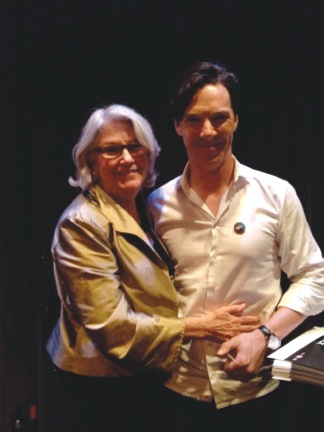 |
|
| Rebecca Eaton with Benedict Cumberbatch (photo courtesy of the author) | |
But in Making Masterpiece, these Commander Overdrive instincts prove ideal, for Eaton does something few memoirists would dare. She asks others to weigh in and expand on her recollections, allowing us both a close-focus and more panoramic vision. Whether her collaborators are colleagues at PBS, her daughter or actors like Kenneth Branagh--who wrote to the preface--their input is far from pro forma.
Writing students, not to mention nostalgists, will relish Eaton's portrait of Alistair Cooke, Masterpiece Theatre's first m.c., and Julian Fellowes's thoughts on constructing Downton Abbey are likely to become required reading at film schools and beyond.
There's also food for those insatiable Harry Potterites. They'll enjoy the pages on the filming of David Copperfield, whose cast included a nine-year-old Daniel Radcliffe making his acting debut. His first encounter with Maggie Smith on the set? "Nice to meet you; would you like me to call you 'Dame'?" It also emerges that the actor, possessed of one of the most impressive work ethics going, was something of a skiver at this point. His director Simon Curtis laughingly remembers having to admonish him: "I sat him down and said, 'Daniel, I know filming can be very boring, but we're on a journey. I don't know if you want to be an actor or not, but I can guarantee you that whatever you do, never again will you play the title part in a great British novel with actors of this caliber.' "
How could Curtis have known that Radcliffe would do just that? Eaton can't have either, but she kept--and reproduces--"one of the very few actor thank-you notes" she's received: "Dear Rebecca Thank you for giving me such a good time in Pasadena I had a great time. Love Daniel Radcliffe."
Early on in her memoir, Rebecca Eaton tell us that what she loves most in the world is stories (actors, one senses, are a close second). In fact, as she comes to realize, setting down the story of her many years at PBS has galvanized her. She has "fallen in love with Masterpiece again, both as a viewer and as a worker." A treasure house of anecdote and insight, observation and object lessons, Making Masterpiece is quietly electrifying. --Kerry Fried
History
On Paper: The Everything of Its Two-Thousand Year History
by Nicholas A. Basbanes
"Self-confessed bibliophiliac" Nicholas Basbanes has written several volumes on book collecting and book mania; now, On Paper moves beyond the world of books to consider the material from which they are made.
This is not a simple history of paper's discovery and spread of the material, though Basbanes devotes some time to its discovery in China and movement west through the Islamic world to Europe. Instead, On Paper is a history of paper in terms of function, innovation and flexibility. Working in a thematic rather than a chronological structure, Basbanes leads the reader from the workshop of a ninth-generation artisanal papermaker in Japan to the factories of industry giant Kimberly-Clark. He describes the complexities of making forgery-proof paper for currency, the differing qualities of rag and wood pulp for paper making and the challenges of recycling. He discusses toilet paper, passports, propaganda leaflets, gun cartridges and cigarettes.
The contribution of paper to vast historical changes is central to many of the stories Basbanes tells. Paper allowed the creation of mass media, improved public health and gave women more freedom. Paper made new forms of notation possible, from musical scores to engineering drawings. Paper even contributed directly to two revolutions: the American Revolution and the Sepoy Rebellion of 1857.
Written as a first-hand exploration, On Paper takes a close look at a product so ubiquitous as to be almost invisible and makes the reader see how amazing it really is. --Pamela Toler, blogging at History in the Margins
Discover: Basbanes (A Gentle Madness) reveals how paper changed the world--over and over again.
Family: Three Journeys Into the Heart of the Twentieth Century
by David Laskin
From the destruction of Jewish life in Eastern Europe to the establishment of the state of Israel and the extraordinary prosperity and influence of American Jews, the past century has been one of the most eventful, for both good and ill, in the history of the Jewish people. In The Family, journalist and popular historian David Laskin deftly employs the story of his own maternal ancestors as a proxy for the millions who experienced those momentous events, in the process offering some hints at the reasons for Jewish survival.
The most gripping portion of Laskin's book is his excruciating account of the extermination in early 1940s of the family line in Europe, the majority victims of Nazi Aktions against the Jews preceding the establishment of the death camps. Yet, even as his European relatives were being wiped out, two family businesses--a housewares company and his great-aunt Itel's Maiden Form (later Maidenform) Bra Company--flourished. The story of the family's Israel branch, established in 1924 by Chaim Kaganovich, reveals the harsh life that greeted Jewish pioneers in Palestine and illuminates some of the early struggles between Jews and Arabs that have become only more bitter and intractable today.
Many in the family, including Laskin, have abandoned religious practice while at least clinging to some form of Jewish cultural identity. Though Laskin doesn't confront it, the question of whether that identity will be enough to sustain the Jewish people for another century lingers over this work.
Despite that omission, The Family succeeds in transforming the intensely personal account of how "[h]istory made and broke my family in the twentieth century" into a powerful rendition of the tragic and triumphant history of the Jewish people. --Harvey Freedenberg, attorney and freelance reviewer
Discover: Using his mother's family as a proxy, Laskin (The Children's Blizzard) narrates the history of the Jewish people in 20th-century Europe, Israel and the U.S.
Sports
The 34-Ton Bat: The Story of Baseball as Told Through Bobbleheads, Cracker Jacks, Jockstraps, Eye Black, and 375 Other Strange and Unforgettable Objects
by Steve Rushin
More than any other sport in the U.S., baseball has a certain quirkiness, even all-out bizarreness. Larger-than-life characters and iconic ballparks aside, it's the minutiae associated with the sport that contribute to this quality: the seventh-inning stretch, pine tar, chewing tobacco, bobblehead dolls, hot dogs and more, says Sports Illustrated's Steve Rushin, are just as integral to baseball's history as Louisville Slugger bats or the ball itself. In The 34-Ton Bat, he explores the origins of these and other artifacts and traditions for a rollicking account of baseball's past.
Rushin has unearthed a panoply of riches in baseball's history. For example, American doughboys in World War I were the most prized grenadiers thanks to their experience throwing baseballs; ball park grandstands functioned as open-air speakeasies during Prohibition; and baseball played an important role in ushering in the end to Jim Crow laws during the civil rights movement. He expertly shows baseball's omnipresence at every turn of modern American history with an eye for the eccentric and flowing anecdotal prose. The 34-Ton Bat is a sheer delight, tailored to the sports fan but sure to enthrall any reader with a taste for the weird, wacky and wonderful. --Benji Taylor, freelance writer, student, blogging at Destructive Anachronism
Discover: The strange, quirky and entertaining stories behind the items that shaped the national pastime.
House & Home
The Knitted Slipper Book: Slippers and House Shoes for the Entire Family
by Katie Startzman
"Knitted slippers possess a... kind of magic," Katie Startzman writes in the introduction to her colorful, diverse collection of slipper patterns. "They are nothing more than yarn, time, and skill, combined to make something lovely and useful." From froufrou pom-pom flats to rugged lace-up boots, adorable "sleepy friends" (a fox and rabbit) to foldable travel slippers, The Knitted Slipper Book provides that magic, along with a hefty dose of practicality.
The Materials and Basic Techniques section provides helpful instructions on many aspects of slipper-making, from pattern choice and sizing to felting by hand and tips for slipper care. Startzman also demonstrates four options for soling, with photos, and two options for lining, which can be adapted to many of the patterns in the book.
The collection runs the gamut from practical to funky, from plain to fanciful (the "Genie Folk" slippers boast colorful embroidery, the recycled fringe slippers a Fraggle-like top). Startzman designed many patterns with little ones in mind, from felted Mary Jane baby booties to inside-out slipper socks (with non-slip suede soles) and whimsical ballerina slippers with wrap ties. For adults, there are also many options: sturdy house shoes or cloud-soft slippers meant for lounging; backless scuffs or jute-soled loafers; unisex two-tone clogs or tall felted mukluks.
For holiday gift knitting or simply the perfect replacement for a pair of worn-out slippers, The Knitted Slipper Book truly has something for everyone. --Katie Noah Gibson, blogger at Cakes, Tea and Dreams
Discover: A colorful, diverse collection of slipper patterns for all ages, with practical, helpful tips and instructions.
Children's & Young Adult
Allegiant
by Veronica Roth
Veronica Roth's brave finale captures the spirit of her Dauntless heroine. Insurgent concluded with an old recording from Edith Prior--an ancestor of Tris discovered in those final pages--saying that once Divergents are in abundance, it will be time for the five factions to be released from their isolated lives in Chicago, out into the unknown world to rebuild it. Caleb Prior, Tris's brother, betrayed his sister in the last book when he allied with former Erudite faction leader, Jeanine Matthews, to withhold Edith Prior's recording from everyone--an action for which he faces dire consequences in Allegiant. Tris and Tobias alternate as narrators in this final installment, and their respective world views and choices often splinter the peace between them. They agree, however, that they must leave the city and go beyond the fence where all the divisions fall away for a chance at a better life. Others wish to leave, too, but out of fear want to maintain the established factions; they call themselves the Allegiant.
Themes of discord and unity challenge the faction ethos on a grander scale, and even Tris and Tobias constantly wonder how they'll define themselves once the fight ends. Roth digs deeper into Tobias's childhood and inner torments in his chapters. The transformations these characters have undertaken since Divergent have prepared them for war, but many surprises await them on the battlefield. This solid ending upholds the high standards established with the first two volumes in the series. --Adam Silvera, children's bookseller
Discover: The courageous finale of the Divergent trilogy, which captures the spirit of Dauntless heroine Tris.
What the Heart Knows: Chants, Charms and Blessings
by Joyce Sidman, illus. by Pamela Zagarenski
These 29 poems from the duo behind Red Sings from Treetops touch upon life's heartaches and triumphs, quandaries and epiphanies.
Divided into four sections ("Chants and Charms," "Spells and Invocations," "Laments and Remembrances" and "Praise Songs and Blessings"), the collection begins with "Chant to Repair a Friendship," with a haunting refrain: "Come, friend, forgive the past;/ I was wrong and I am grieving." The poem hinges on a phrase at its center: "Anger's brief, but love is vast." Pamela Zagarenski's reassuring illustration depicts one friend precariously balanced upon a wheel as the other reaches out a steadying hand. "Time Spells" picks up the theme again, as Joyce Sidman exposes time's schizophrenic characteristics--pining for acceleration ("God of Time,/ bring forth all galloping things") and then to brake and "stretch like a sleepy dog" when in the company of friends. As she offers advice on "How to Find a Poem" ("Wake with a dream-filled head/.../ stand waiting/ on delicate hooves"), Zagarenski softly blends real and surreal earthtoned images of an elusive deer and its observer. Later in the volume, "Song in a Strange Land" similarly evokes a dreamlike quality ("I awaken in a village/ on a mountain/ far from anything/ I have ever known") as the speaker in the illustration rides on the red comb of a rooster in stark contrast to a jet-black harbor.
The volume makes an ideal companion for the transition into adulthood, when young people may experience the paradox of a connection to their inner convictions as well as an alienation from their physical metamorphosis. --Jennifer M. Brown, children's editor, Shelf Awareness
Discover: Joyce Sidman offers 29 poems to accompany readers on the journey into adulthood.
Snowflakes Fall
by Patricia MacLachlan, illus. by Steven Kellogg
This evocative picture book, dedicated to the people of Newtown, Conn., and the village of Sandy Hook, may be appreciated as a loving homage to the seasons of childhood as well as a way to cope with fear and loss.
Patricia MacLachlan (What I Knew First) and Steven Kellogg (Clorinda) move fluidly through an array of emotions without ever seeming maudlin. "After the flowers are gone/ Snowflakes fall./ Flake/ After flake/ After flake/ Each one a pattern/ All its own--/ No two the same--/ All beautiful." These poetic opening lines accompany an image of children catching snow on tongues and mittens. White crystals on a swirl of blue could be ice or air, populated by earthbound children or spirits in the sky.
Laughing children and loyal dogs dominate the scenes. One shows them rolling downhill toward an idyllic valley. Kellogg zeroes in on a church, a library, a flagpole, then one boy's bedroom. MacLachlan and Kellogg suggest that children must experience their feelings in their own way ("Wailing winds may blow/ And frantic, icy snowflakes/ scratch the window glass"), yet the boy has the company of his Teddy bear, pup and kitten. When the sun rises, they make snow angels. Snow melts into the rushing waters of spring, and "when the flowers bloom/ The children remember the snowflakes/ .../ No two the same--/ All beautiful."
Words and pictures bring the book full circle, as Kellogg depicts 20 snow angels taking flight, the impressions of children becoming spirits in the sky. --Jennifer M. Brown, children's editor, Shelf Awareness
Discover: A loving picture book that acknowledges the preciousness of life and the healing power of nature.


